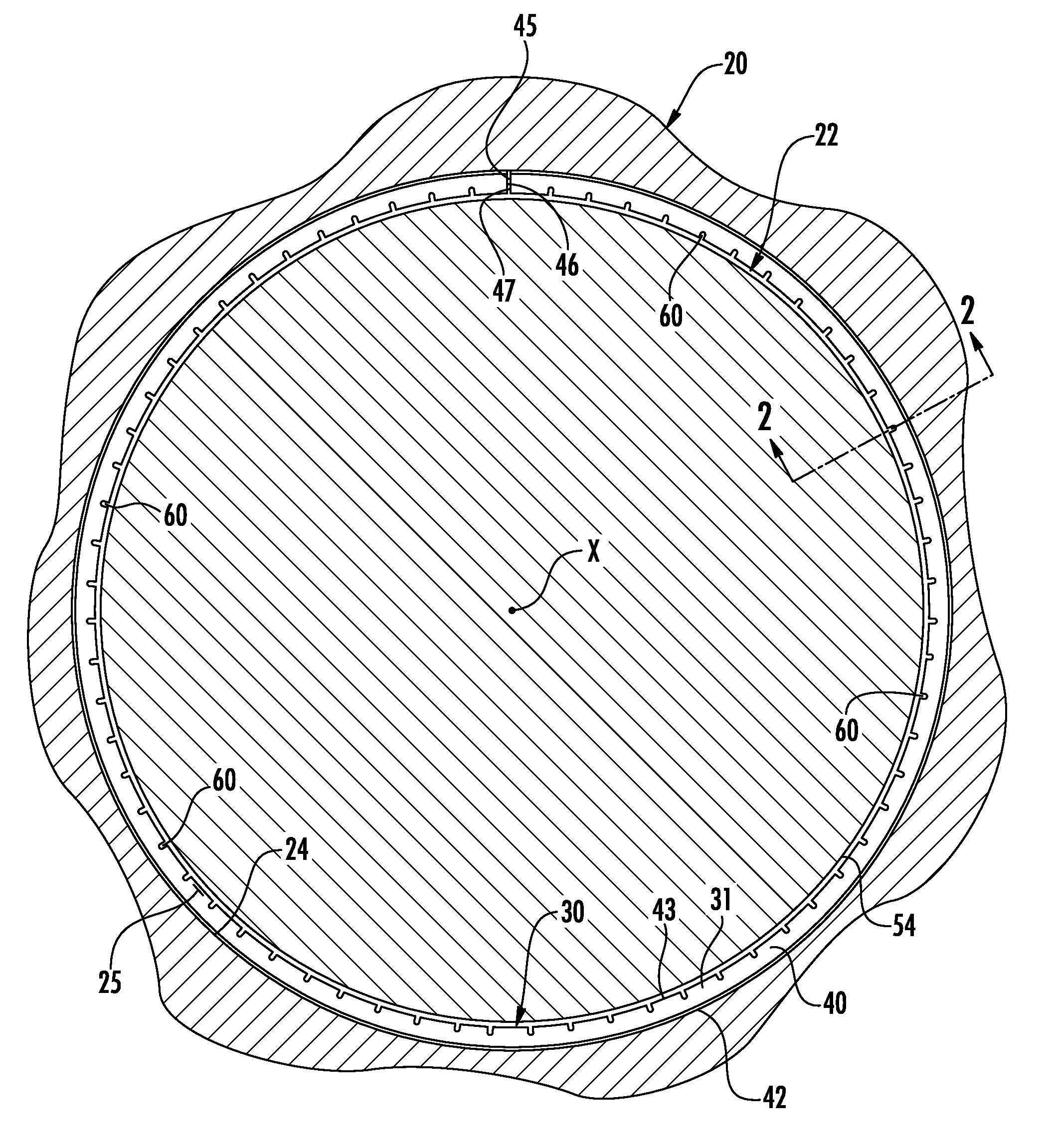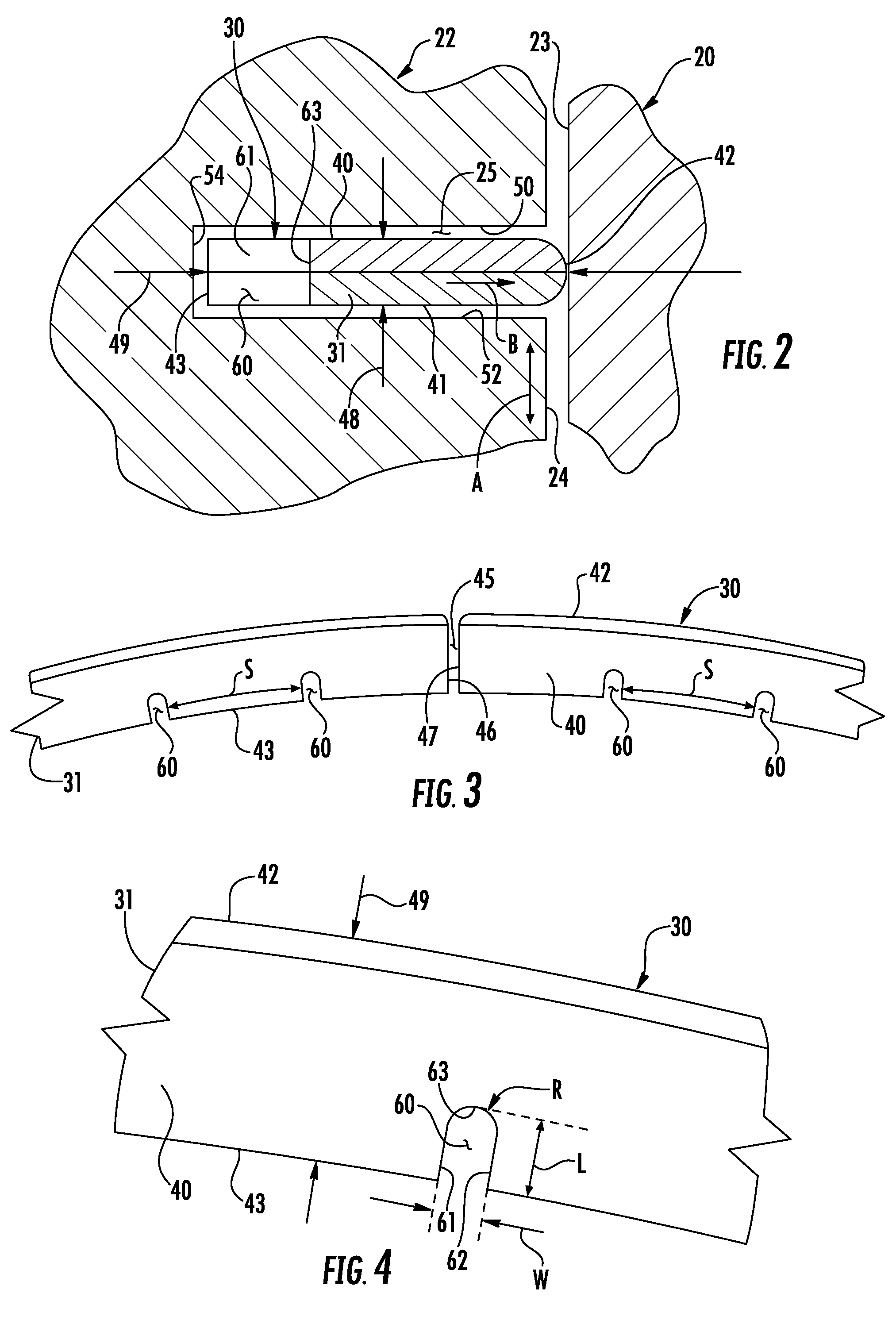Radially notched piston rings
- Summary
- Abstract
- Description
- Claims
- Application Information
AI Technical Summary
Benefits of technology
Problems solved by technology
Method used
Image
Examples
Embodiment Construction
[0023]Turning now to the drawings, in which like reference characters indicate corresponding elements throughout the several views, attention is first directed to FIG. 1 which shows a mechanism including a first member, generally designated by the reference character 20, and a second member, generally designated by the reference character 22, which are disposed for relative reciprocal movement along a linear axis X which is perpendicular to the plane of the illustration. The mechanism is typically representative of internal combustion engines, positive displacement pumps, linear fluid actuated motors and similar apparatus in which first member 20 is generally referred to as the bore or cylinder and second member 22 is usually referred to as the piston. In FIG. 2, first member 20 includes inner cylindrical sidewall 23 which is coaxial with and spaced from outer cylindrical sidewall 24, also shown in FIG. 1, of second member 22. The space, commonly termed sidewall clearance and herein...
PUM
 Login to View More
Login to View More Abstract
Description
Claims
Application Information
 Login to View More
Login to View More - R&D
- Intellectual Property
- Life Sciences
- Materials
- Tech Scout
- Unparalleled Data Quality
- Higher Quality Content
- 60% Fewer Hallucinations
Browse by: Latest US Patents, China's latest patents, Technical Efficacy Thesaurus, Application Domain, Technology Topic, Popular Technical Reports.
© 2025 PatSnap. All rights reserved.Legal|Privacy policy|Modern Slavery Act Transparency Statement|Sitemap|About US| Contact US: help@patsnap.com



